Where to begin? I guess for anyone who has been around for a while, I can address the name change. In previous posts, I have referred to my posts reflecting on my job performance/professional growth simply as the “PGP”. Over the last 2 school years, our school has been working with a task force (made up of teachers and admin) to re-work the annual Teacher-Led Evaluation process and clear up some of the grey areas. With this new and refined evaluation process, we were gifted a new name; Annual Performance Review Process, or as I like to call it, A-PReP.
For our mid-year check-in, I have been tasked with reflecting on my progress with my specific project (still referred to as the ‘PGP’) as well as my overall job performance. Let this be your warning for a very long blog post ahead… You officially have my permission to skip reading this one – unless you are my Head of School, of course.
…I guess I must actually decide where to begin this blog post now… My PGP!
Structured Word Inquiry Prototype
I have been working on this specific PGP on Structured Word Inquiry (SWI) since the start of last school year (fall 2020). At my mid-year check-in, my Head of School, Jon Mitzmacher, along with my colleague, Melissa Thompson, pushed me rework this PGP and prototype it. While my work was choppy and delayed through the spring of 2021, I was falling in love with SWI everyday and knew this would be something I wanted to continue the following school year. I have continued meeting bi-monthly with Melissa as my prototype coach and thought partner. I picked up my prototype at the start of this school year and I dove right into the work with my new students – starting back at the beginning with understanding some of the phonology patterns with vowels. It felt better this time around because I felt like I had more of sense of where I was going.
I am collecting and tracking data from journal entries, all written work, and our weekly spelling game on Fun Friday! With our winter break and pivot to online learning for two weeks, I did notice that some rules may have gotten pushed to the back of my students’ brains and they need a little refresher. However, as soon as I was able to give a prompt or hint, most of my students were able to correct their own spelling.
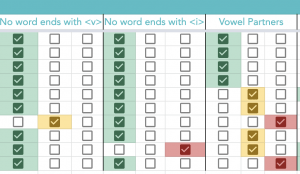
Right before the winter break, we were using word sums to look at suffixing conventions, specifically the rule about a vowel suffix replacing the single, silent <e> at the end of a word;
skate + ing –> skating
Upon our return from winter break, I was so pleased to see a student help another student remember this suffixing convention (with ZERO prompting from myself) during our last journal writing period. All it takes is a bit of review and all of the rules are coming back!
I have seen tremendous growth in my students’ understanding of morphology (the study of the structure of words) by using word sums. They have been an instrumental tool in understanding the suffixing conventions.
Seeing how effective these word sums are, I am anticipating that my next move (once I finish the suffixing conventions) will be to introduce my students to the Word Matrix.
Without having my “big picture” (September to May) data on spelling progress, I can reflect on the impact that SWI has had in my classroom so far…
I smile with such pride and amazement when my students share rules with each other, self-correct their own spelling, or even ask questions like ‘why does the word ski end with an <i> if no English word ends with an <i>?’. I believe that these are all artifacts that show the impact Structured Word Inquiry has had on their learning. When I launched this “spelling unit” (this is what I originally called it last year), I had no idea that it could help my students develop their critical thinking skills, not just their spelling skills! This is no longer a spelling unit, this is a way of learning, exploring, and understanding.
If that isn’t enough to show the impact of SWI…
…I think that impact of a professional growth project can often be measured by how much excitement the teacher has around their project. For me, I have completely fallen in love with SWI and I have spent many hours outside of my teaching time to do my own research, make connections with other educators who are studying SWI, read many books and articles, and talk about morphology and etymology with ANYONE in my life who will listen… More on that later when I touch on the professional learning that I am doing.
Moving on to a more general reflection on my overall performance thus far this year…
Successes
Something that has come up the last two years was having a more comprehensive assessment tool box. While there is always more work and more improving to be done, I am proud of the self-assessment tools I have implemented in my classroom so far. I have had my students complete self-reflections on their oral presentations, on their ability to collaborate after completing a group task, and lastly, a simple self-assessment on our school’s revised Learning Skills which included identifying areas where they ‘glow’ and areas where they would like to ‘grow’.
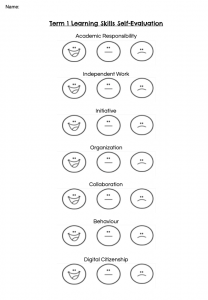
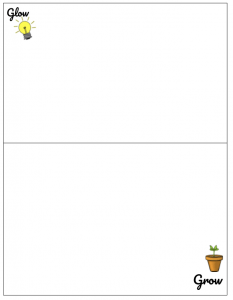
I blogged earlier this year about the need to ensure that we are personalizing our teaching in order to fill any gaps that students may have due to the many pivots that have interrupted our last two school years. I have had the most success in personalizing my students’ learning through our Math and Language Arts Centres, as I am able to meet with small groups of students for targeted lessons. Just this week I reached out to a family to share how proud I was of their daughter’s growth in reading and writing. It is very clear that the personalized work and targeting guided lessons are making a difference for this student.
Last year, I found it challenging to create a rich and engaging physical environment with the covid restrictions and lack of wall space in my room last year. While there still may be some challenges with sharing wall space in our trilingual, cohorted, classroom, I have found it much easier this year to display work that shows student thinking, anchor charts, and learning materials. Through my prototype protocol, I have been able to create anchor charts and word walls for my students and I feel so fortunate to have a space in the classroom to display these tools for their everyday use!
Challenges
As a result of the pandemic, we have become siloed in our classrooms and cohorts. I think this has added an extra layer to my ability to confidently open my doors for colleagues to come see what I am doing in my classroom. The reason I say ‘an extra layer’ is because even pre-pandemic I was often feeling nervous to invite colleagues and formally run a “pineapple PD” session in my classroom. I am not shy to tweet out what is happening in my classroom, but as a newer teacher, I always get a little bit of the ‘public speaking nerves’ as soon as I am being watched while teaching something new. We always say that the best PD is the teacher down the hall and that we can learn so much from each other… So I think it is time to peel back some layers and open up my doors!
Professional Learning
As described earlier in this post, I have been doing a lot of professional learning related to Structured Word Inquiry. I am frequently communicating with Sharon Reichstein, our Director of Special Education, about resources or questions that arise throughout SWI lessons. I am also actively participating in Sharon’s monthly drop-in SWI lessons for teachers after school. I have become so invested in teaching Structured Word Inquiry and learning as much as I possibly can, so I have been accessing a great amount of additional resources;
- I attended a 2-part (virtual) workshop with Pete Bowers, the creator of Structured Word Inquiry. Since this workshop, I have been in communication with Pete through e-mails and 1-on-1 zoom calls.
- I have purchased (and am making way through) multiple books related to SWI and orthography (recommended by the members of the SWI Facebook groups I am in, as well as, Pete Bowers).
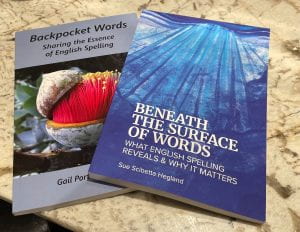
I have joined a weekly zoom book club to discuss these books - I am also continuing the access the resources Pete Bowers shares in his newsletter, along with the practical videos of real life classroom lessons that can be found on his youtube page.
- I have joined a monthly group of teachers and tutors who share SWI teaching resources and tips from their work in their classrooms or working 1-on-1 with students in a tutoring environment.
Outside of SWI, I have continued my professional learning around Dr. Ross Greene’s Collaborative Problem Solving (CPS). I have joined my school’s CPS Cohort to help deepen our understanding of the CPS model, as well as, how it is integrated in our school’s behaviour expectations. The first half of our year has been focused on reviewing the theories from Dr. Ross Greene with the fantastic resources from Lives In The Balance. Now we will be shifting into finding more ways to reignite our school policy and behaviour expectations amongst the wider faculty.
I have continued to search for learning opportunities online; mainly through my PLN on Twitter and Facebook. Some highlights are…
- My involvement with the #2ndchat bi-weekly Twitter Chat
- Participating in community led workshops (most recently, a webinar titled ‘The Inclusive Classroom’).
- Subscribing to education based newsletters (i.e. Traci Piltz: Weekly Tech-y News)
Goals & Next Steps
As a self-proclaimed life-long learner, I feel like my list of next steps and goals could go on for miles and miles (or should my Canadian roots say kilometers and kilometers? …It just doesn’t roll off the tongue the same way). Instead, I will highlight just a few of my next steps…
SWI Prototype
- Finish the prototype protocol (which includes, gathering the ‘big picture’ data and sharing out what I have done with the Language Arts teachers… This could also include creating a framework to scale out SWI at my school)
- A great way to help get more teachers on board with the idea of possibly scaling out this new way of teaching spelling would be to invite them for a lesson. As previously mentioned, this is something that scares me, but I believe it is time to take that next step forward and launch some SWI Pineapple PD!
Teaching
- Student blogfolios has been on my radar for years. I even sent out our school’s permission slip to launch them in Grade 2 March 2020… and then we pivoted to Distance Learning and it was pushed to the back burner. While I am normally quite ambitious, I am realistic and do not think that right now is necessarily the right time to launch another large project in my classroom while working on my prototype. However, I would like to spend more time in the second half of the school year working on skill development around students using various tech tools and documenting their own learning. I believe this can be done with our classroom blog and class Twitter accounts (follow us – 2A & 2B)!
- Reflecting on our school’s Learning Target, I would like to explore more ways to create authentic learning experiences that my students can connect to real life problems or ideas. An idea that was sparked in a Twitter Chat involved finding ways to incorporate the upcoming Olympic Games in my classroom (i.e. graphing medals won in Math, exploring China through our Social Studies Global Communities unit).
Professional Learning
- I will continue my professional growth as outlined above with Twitter chats, book clubs, cohort meetings, and exploring resources shared by my PLN online.
- I am currently seeking out programs in which I can continue my formal education at a Graduate level. (stay tuned for more on that..)
For someone who wasn’t sure where to begin this post, I sure did have a lot to say. If you have made it this far (and you are not the Head of School who is administering my Performance Review), I applaud you! If you feel so inclined, please leave a comment below! I would love to hear your thoughts and insights about my mid-year reflection (and PLEASE, as always, feel free to share any resources or point me in any directions for more professional learning).
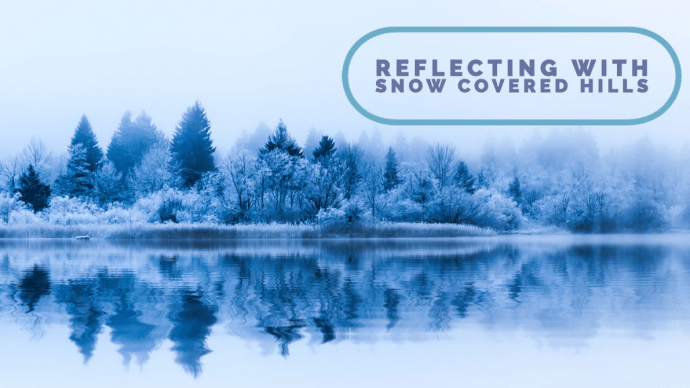
You are a TRUE gem and an unbelievable inspiration to our faculty. Thank you for all that you do and continue to do to grow yourself as an educator extraordinaire. It is refreshing to have another word nerd on staff who shares so many of my same passions.
Keep up the amazing work 🙂
Sharon
I told you (very) recently that I am so excited by your PGP on SWI, but after reading your blog post, I’d like to extend that comment to say, I’m so excited and inspired by EVERYTHING you’re doing for your students and for yourself! In your post you say, “I think that impact of a professional growth project can often be measured by how much excitement the teacher has around their project.” But actually, I think the impact can be measured by how much excitement OTHER teachers have because of it, and how it then flows to other classrooms in the school…which I know is only yet to come!
Can’t wait to continue on this journey with you, no matter where I am in the coming months, just maybe not on April 5th 😉